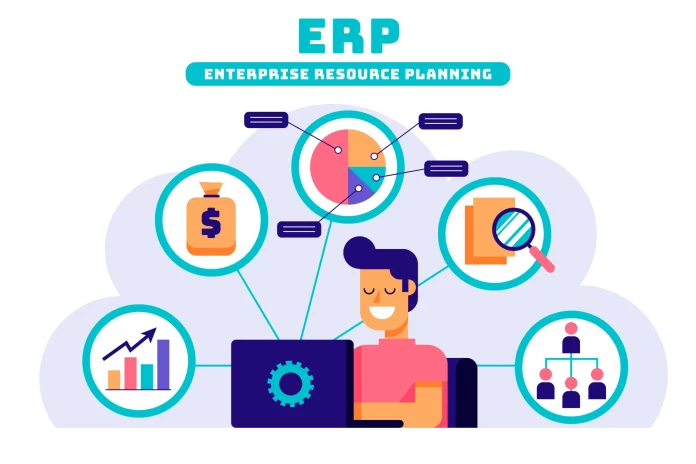Wandering how to develop ERP software using PHP? Then you have landed at the right place. ERP (Enterprise Resource Planning) software development involves creating comprehensive systems that integrate various business processes and functions into a unified platform. These systems streamline operations, facilitate data sharing, and enhance decision-making by providing a holistic view of an organization’s resources.
By 2027, the ERP market in the Asia-Pacific region is projected to experience rapid growth, with a compound annual growth rate of 9.8%.
An ERP system is a suite of integrated applications designed to manage and automate core business functions such as finance, human resources, inventory management, customer relationship management (CRM), supply chain, and more. These systems replace disparate software solutions and manual processes with a centralized platform that allows data to flow seamlessly between departments.
Discover How to Develop ERP Software Using PHP: Key Tips
1. Planning and Analysis
The planning and analysis phase of how to develop ERP software using PHP is a critical stage that sets the foundation for the entire project. It involves understanding the organization’s needs, defining project goals, and establishing a roadmap for development. Effective planning and analysis ensure that the ERP system aligns with the business’s objectives and serves as a valuable asset.
A. Identifying Business Requirements
The first step in this phase is to identify and document the business requirements. This involves collaborating closely with stakeholders from various departments to understand their needs, pain points, and objectives. Here’s how this process unfolds:
- Stakeholder Engagement: Engage with key stakeholders such as department heads, managers, and end-users. Conduct interviews, workshops, and surveys to gather insights into their specific requirements and challenges.
- Process Mapping: Map out the existing business processes in detail. This helps identify inefficiencies, redundancies, and areas that could benefit from automation or optimization.
- Gather Functional Requirements: Document the specific functionalities the ERP system needs to support. For example, in manufacturing, this might include inventory management, production planning, and quality control.
- Non-Functional Requirements: Consider non-functional aspects like performance, security, scalability, and user experience. These requirements ensure the system’s reliability and usability.
- Prioritization: Prioritize requirements based on their importance and impact on the business. This helps in case trade-offs are necessary during development.
- Validation: Share the documented requirements with stakeholders for validation. This step ensures that the requirements accurately represent their needs and expectations.
B. Scope Definition and Project Goals
With the requirements in hand, the next step is to define the scope of the project and establish clear project goals. This involves outlining what the ERP system will encompass and what it won’t, as well as setting achievable objectives:
- Scope Statement: Clearly define the boundaries of the ERP system. What modules will it include? What processes will it cover? This prevents scope creep and helps manage expectations.
- Inclusions and Exclusions: Detail what functionalities will be part of the ERP system and what will be excluded. This eliminates misunderstandings and prevents attempts to add unrelated features later.
- Project Goals: Set specific, measurable, achievable, relevant, and time-bound (SMART) goals. For instance, a goal might be to reduce order processing time by 30% within six months of system deployment.
- Key Performance Indicators (KPIs): Define the KPIs that will be used to measure the success of the ERP system. These metrics should directly align with the project goals.
- Resource Allocation: Determine the resources required for the project, including budget, team members, and technologies.
- Risk Assessment: Identify potential risks and challenges that could arise during development. Plan strategies to mitigate these risks and ensure a smoother implementation.
- Communication Plan: Establish a communication plan to keep stakeholders informed about the project’s progress, milestones, and any changes in scope.
Discover the world of ERP systems and their significance in modern business. Dive into our comprehensive article to explore what ERP systems are all about.
2. Database Design
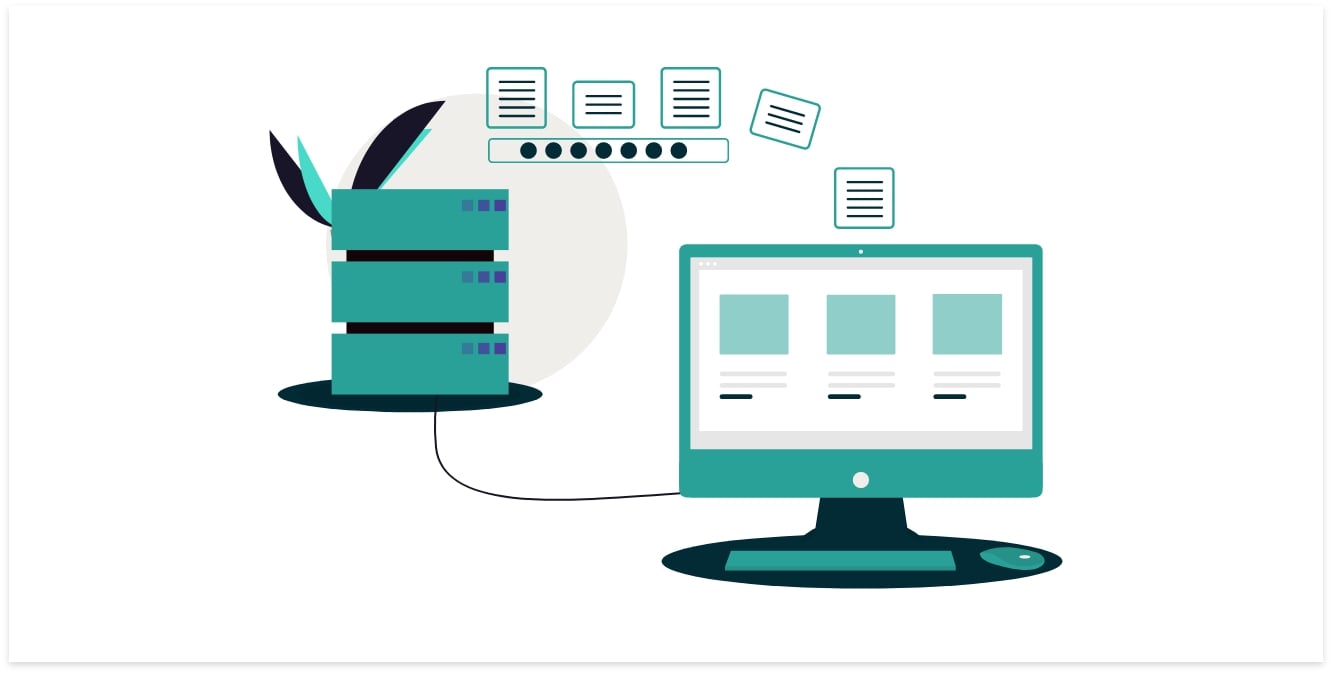
Database design is a critical aspect of how to develop ERP software using PHP, as it forms the backbone of the system’s data management. A well-designed database ensures efficient data storage, retrieval, and manipulation, contributing to the overall performance and usability of the ERP system.
A. Entity-Relationship Diagram (ERD) Creation
An Entity-Relationship Diagram (ERD) is a visual representation of the database’s structure. It outlines the entities (objects) in the system, the attributes that describe them, and the relationships between entities. Creating an ERD helps in conceptualizing the database design before implementation:
- Entities: Identify the main entities in the system, such as customers, products, employees, etc. These are the core objects that the ERP system will manage.
- Attributes: Define the attributes or properties that describe each entity. For instance, a “Product” entity might have attributes like “Product ID,” “Name,” “Price,” and “Quantity.”
- Relationships: Establish relationships between entities. Relationships can be one-to-one, one-to-many, or many-to-many. For example, an “Order” entity might be related to multiple “Product” entities in a one-to-many relationship.
- Cardinality: Specify the cardinality of the relationships (e.g., one-to-one, one-to-many) to indicate how instances of entities are related to each other.
- Normalization: Ensure that the ERD follows the principles of normalization, which eliminates data redundancy and ensures data integrity. This involves organizing data into related tables to reduce data duplication.
B. Defining Tables and Relationships
After creating the ERD, the next step is to translate it into actual database tables and establish relationships using SQL (Structured Query Language). This involves creating tables that mirror the entities and attributes from the ERD and using foreign keys to represent relationships:
- Table Creation: Create individual tables for each entity. Define the appropriate data types for each attribute, such as integers, strings, dates, etc.
- Primary Keys: Identify the primary key for each table. The primary key uniquely identifies each record within the table.
- Foreign Keys: Implement foreign keys to establish relationships between tables. A foreign key in one table refers to the primary key in another table.
- Referential Integrity: Enforce referential integrity by ensuring that foreign key values in one table correspond to existing primary key values in another table. This prevents data inconsistencies.
- Indexing: Consider adding indexes to columns that are frequently used in queries. Indexes improve query performance by allowing the database to quickly locate specific data.
C. Data Normalization and Optimization
Data normalization is a process that minimizes data redundancy and dependency by organizing data into separate tables based on their logical relationships. This optimization technique ensures data integrity and reduces the chances of anomalies. The normalization process typically involves different normal forms, such as first normal form (1NF), second normal form (2NF), and so on.
Optimization also includes considerations for query performance and storage efficiency:
- Index Optimization: Choose which columns to index based on query patterns. Too many indexes can slow down write operations, so it’s a balance between read and write performance.
- Data Types: Choose appropriate data types to optimize storage. For instance, using integer types for IDs can save space compared to larger data types.
- Denormalization: In some cases, controlled denormalization can be applied to improve query performance. This involves reintroducing redundancy to eliminate the need for complex joins.
- Partitioning: For large datasets, consider partitioning tables to improve manageability and query performance.
Related Article: ERP Integration with Blockchain
3. Front-End Development
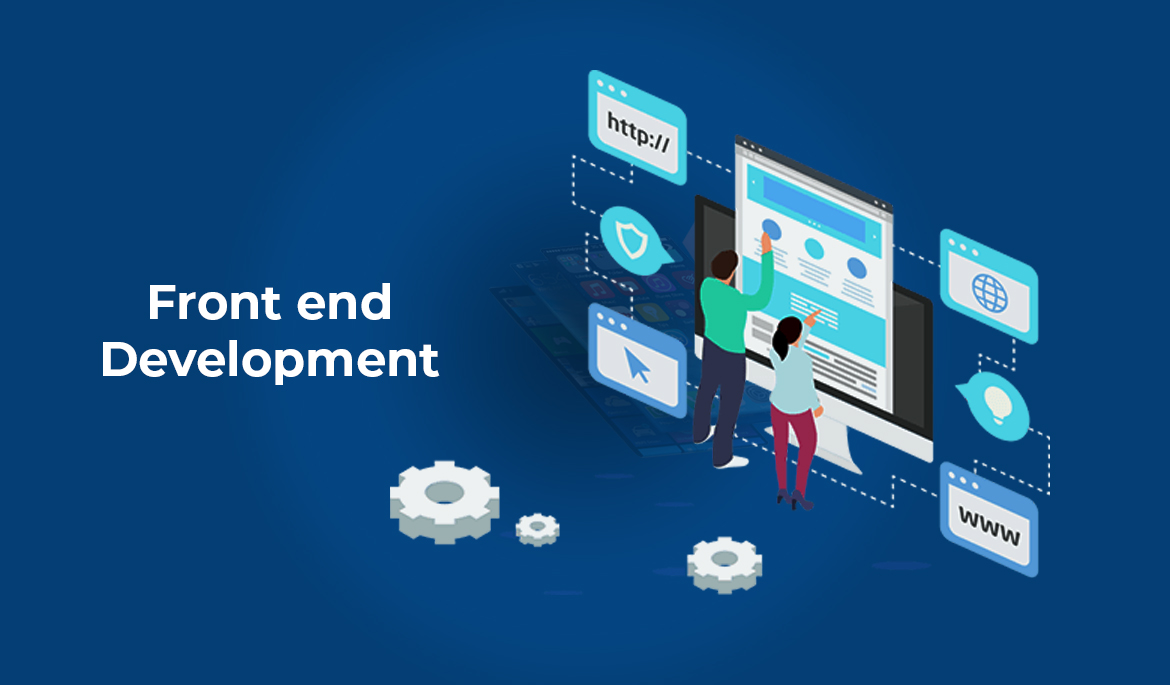
Front-end development is a crucial aspect of how to develop ERP software using PHP. It involves creating the user interface (UI) that users interact with in the ERP software. A well-designed and user-friendly interface enhances the user experience and ensures that users can efficiently interact with the system to perform their tasks.
A. User Interface (UI) Design Principles
Effective UI design is essential to make the ERP software intuitive and visually appealing. Consider the following principles:
- User-Centered Design: Prioritize user needs and preferences throughout the design process. Understand user workflows and design the interface to align with their expectations.
- Consistency: Maintain consistent design elements, such as colors, typography, and layout, across all screens. Consistency fosters familiarity and makes navigation easier.
- Simplicity: Keep the interface simple and uncluttered. Avoid unnecessary elements that could confuse or overwhelm users.
- Visual Hierarchy: Use visual cues like size, color, and placement to guide users’ attention. Important elements should stand out prominently.
- Whitespace: Incorporate whitespace around elements to enhance readability and create a clean, organized appearance.
- Responsive Design: Ensure the interface is responsive and adaptable to different screen sizes and devices. Mobile users should have a seamless experience.
- Accessibility: Design with accessibility in mind, making the interface usable for people with disabilities. Provide alternative text for images and ensure keyboard navigation.
B. HTML, CSS, and JavaScript Basics
Front-end development involves three core technologies: HTML, CSS, and JavaScript.
- HTML (Hypertext Markup Language): HTML is the structural foundation of a web page. It defines the elements and content structure, such as headings, paragraphs, lists, and forms.
- CSS (Cascading Style Sheets): CSS is used for styling and layout. It controls the presentation of HTML elements, including colors, fonts, spacing, and responsive design.
- JavaScript: JavaScript adds interactivity to the web page. It enables dynamic actions like form validation, animations, and real-time updates without requiring page reloads.
C. Framework Selection (e.g., Laravel, Symfony)
Choosing the right front-end framework is crucial as it can significantly speed up development and provide a foundation for creating consistent and maintainable interfaces. Two popular PHP frameworks for front-end development are Laravel and Symfony:
- Laravel: Laravel is a comprehensive PHP framework that includes tools for both back-end and front-end development. It offers Blade, a templating engine for dynamic views, and Mix for compiling assets like CSS and JavaScript.
- Symfony: Symfony is a flexible and extensible PHP framework. It includes components for various aspects of web development, including templating with Twig, form handling, and routing.
4. Back-End Development
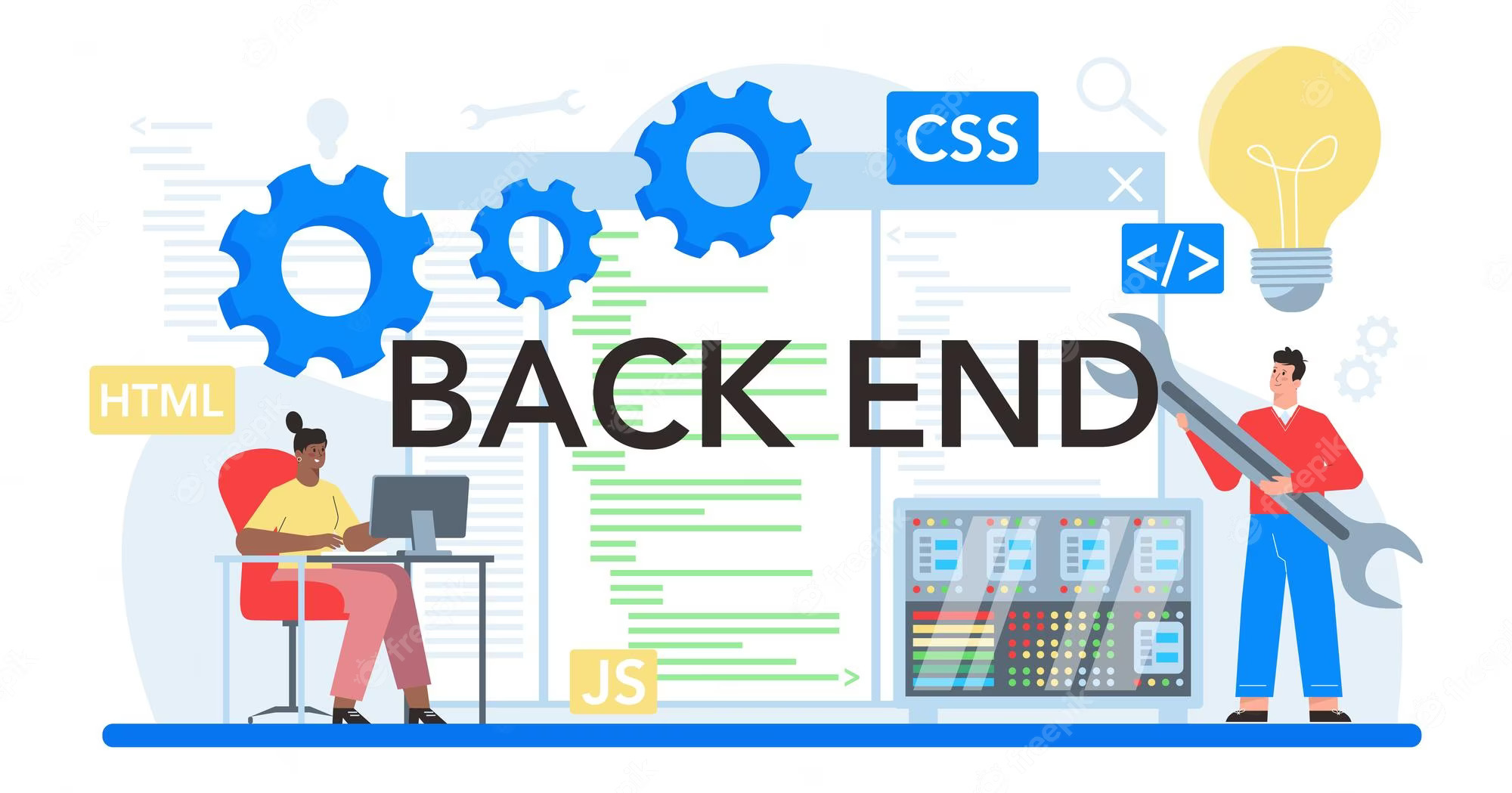
Back-end development in ERP software, as part of “how to develop ERP software using PHP,” focuses on building the logic, functionality, and data management that power the system. It involves creating the server-side components that handle data processing, business logic, and interaction with the database, ensuring a robust and secure foundation for the ERP application.
A. Setting Up the PHP Development Environment
Before diving into back-end development, setting up a proper development environment is crucial:
- PHP Installation: Install PHP on your local machine or development server. Ensure you’re using a compatible version with your chosen frameworks and tools.
- Web Server: Configure a web server like Apache or Nginx to serve your PHP applications.
- Database Setup: Set up a database server (e.g., MySQL, PostgreSQL) to store and manage data.
- IDE or Code Editor: Choose an Integrated Development Environment (IDE) or code editor that supports PHP development for efficient coding.
- Version Control: Utilize version control systems like Git to track changes and collaborate with team members.
B. Creating API Endpoints for Front-End Interaction
APIs (Application Programming Interfaces) enable communication between the front-end and back-end of the ERP software. They allow data to be requested, sent, and processed seamlessly. Here’s how to create API endpoints:
- Route Definition: Using your chosen PHP framework (e.g., Laravel, Symfony), define routes that map to specific API endpoints.
- Controller Logic: Create controller functions that handle incoming requests, process data, and return responses.
- Data Validation: Validate incoming data to ensure it meets the expected format and is safe for processing.
- Response Formatting: Format responses in JSON or XML, making them easy to consume by the front-end.
- Error Handling: Implement error handling mechanisms to provide meaningful error messages and status codes.
C. Implementing Authentication and Authorization
Securing the ERP software is crucial to protect sensitive data and ensure authorized access:
- Authentication: Implement user authentication to verify the identity of users. This typically involves username/password authentication or integration with Single Sign-On (SSO) solutions.
- Authorization: Set up authorization to control what actions different users or roles can perform. This prevents unauthorized access to certain parts of the system.
- Token-Based Authentication: Consider implementing token-based authentication, such as JSON Web Tokens (JWT), which provides secure authentication without the need for session cookies.
- Role-Based Access Control (RBAC): Define roles (e.g., admin, user, manager) and assign permissions to each role. Users are then granted access based on their assigned roles.
- Secure APIs: Ensure APIs are protected from common security vulnerabilities like SQL injection, cross-site scripting (XSS), and cross-site request forgery (CSRF).
5. Module Development
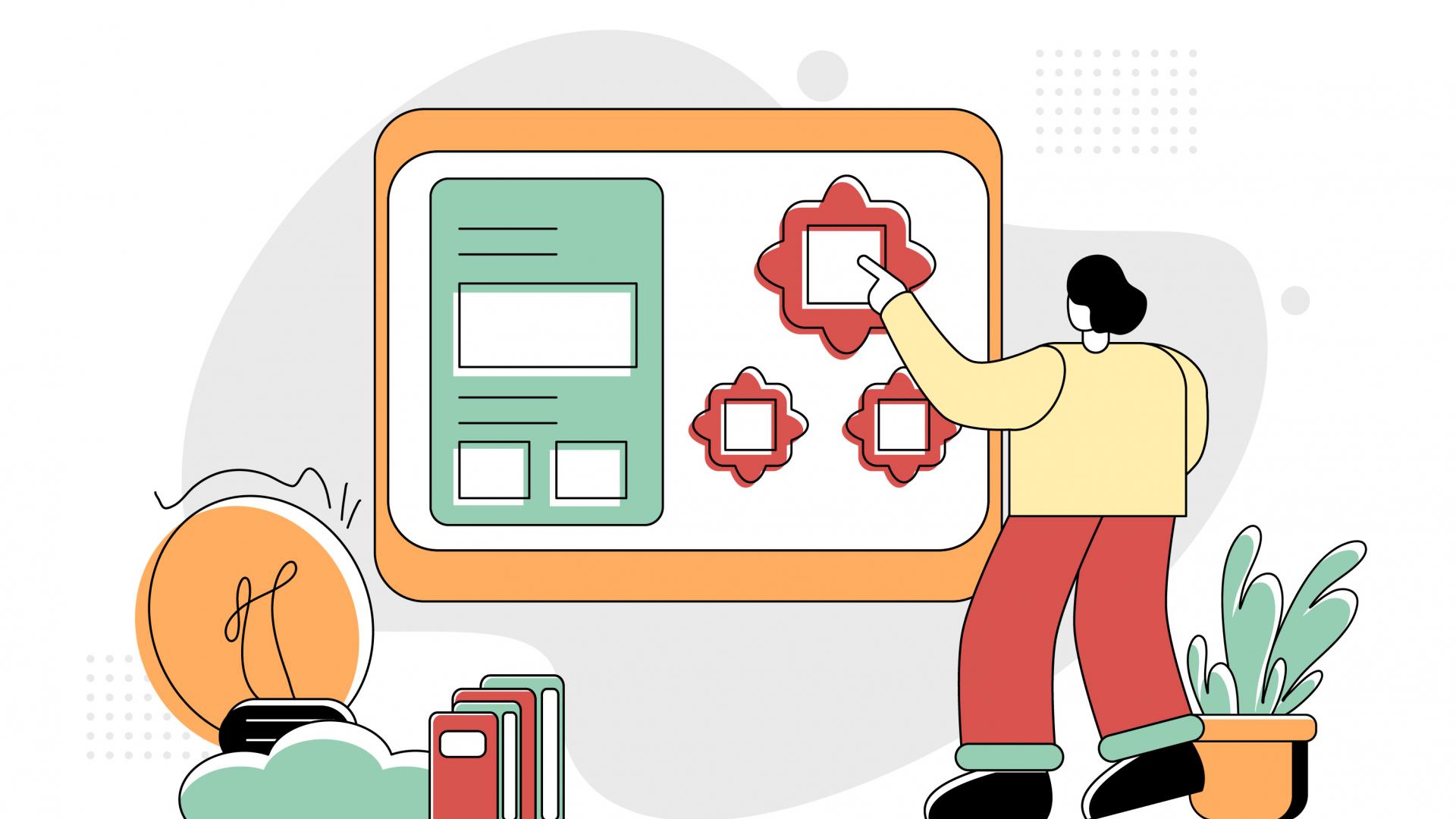
Module development, a crucial step in how to develop ERP software using PHP, involves breaking down the ERP system into smaller functional units known as modules. Each module focuses on a specific area of business operations, such as inventory management, sales, HR, finance, and more. This modular approach makes development more manageable, promotes reusability, and allows for better maintenance and scalability.
A. Dividing ERP into Functional Modules
Dividing the ERP system into functional modules is crucial for effective development and organization. Here’s how to approach it:
- Identify Business Functions: Identify the core functions and processes that the ERP system needs to support. These could include inventory management, procurement, customer relationship management, etc.
- Prioritize Modules: Prioritize modules based on business needs and project goals. Consider starting with essential modules and gradually expanding to more complex ones.
- User Roles: Determine which user roles will interact with each module. Different roles may have distinct access and functionality requirements.
B. Designing and Developing Individual Modules
Each module should be designed and developed as a self-contained unit with its own user interface, logic, and database interactions. Here’s a general outline:
- Module Architecture: Define the architecture of each module, including the front-end components, back-end logic, and database structure.
- UI Design: Apply the UI design principles mentioned earlier to create an intuitive and user-friendly interface for each module.
- Back-End Logic: Develop the business logic and functionality specific to the module. This could involve creating processes, calculations, and data manipulation.
- Database Interaction: Implement database operations to store and retrieve module-specific data. Ensure that the database schema aligns with the module’s requirements.
- Testing: Thoroughly test each module to identify and fix any bugs or issues. Conduct unit testing, functional testing, and integration testing.
C. Interconnectivity between Modules
One of the advantages of ERP systems is the ability to share data and functionality between different modules. Here’s how to achieve interconnectivity:
- API Integration: Implement APIs for each module to enable communication with other modules. APIs allow data to be exchanged securely and efficiently.
- Data Consistency: Establish data synchronization mechanisms to ensure that data remains consistent across modules. Changes made in one module should reflect accurately in others.
- Cross-Module Workflows: Design workflows that span multiple modules. For example, a sales order in the sales module might trigger actions in the inventory and finance modules.
- Authentication and Authorization: Ensure that users can access only the modules they are authorized to use. Implement a unified authentication and authorization mechanism.
- Data Sharing Standards: Define standards for data sharing, such as data formats (JSON, XML) and communication protocols (HTTP, REST).
Curious about ERP system costs? Dive into our article to discover the factors that influence pricing and get insights into budgeting for your business.
6. Data Integration

Data integration is a crucial aspect of how to develop ERP software using PHP, involving connecting the ERP system with external systems for seamless data exchange and synchronization. Effective data integration ensures the ERP system’s accuracy, contributing to better decision-making and operational efficiency.
A. Establishing Connections with External Systems
To integrate with external systems, you need to establish connections and communication protocols:
- API Integration: Many modern systems provide APIs that allow ERP software to interact with them. APIs define how data can be requested, sent, and processed between systems.
- Data Connectors: Utilize data connectors or middleware tools that facilitate communication between different systems. These tools can handle data transformation, validation, and routing.
- Data Formats: Ensure that data formats used for integration (e.g., JSON, XML) are compatible with both the ERP system and the external systems.
B. Implementing Data Import and Export Functionality
ERP systems often need to import data from external sources and export data to other systems. Here’s how to implement data import and export functionality:
- Data Mapping: Map the fields and data structures between the ERP system and the external system to ensure data consistency during imports and exports.
- Validation: Validate imported data to ensure it meets the required criteria. This prevents the introduction of incorrect or incomplete data into the ERP system.
- Transformation: Transform data formats or values as needed to match the requirements of the ERP system or external systems.
- Data Cleaning: Implement data cleaning processes to remove duplicates, correct inaccuracies, and maintain data quality.
- Automated Imports/Exports: Set up automated processes for scheduled data imports and exports. This reduces manual effort and ensures data consistency over time.
C. Real-Time Data Synchronization
In some cases, real-time data synchronization is essential to maintain up-to-date information across systems:
- Event-Driven Architecture: Implement an event-driven architecture where changes in one system trigger events that notify other systems to update their data accordingly.
- Message Queues: Use message queue systems to ensure reliable communication and prevent data loss in real-time synchronization.
- Conflict Resolution: Plan for how conflicts will be resolved when data changes simultaneously in both the ERP system and external systems.
- Logging and Auditing: Implement logging and auditing mechanisms to track data synchronization activities and troubleshoot any issues.
- Monitoring: Set up monitoring tools to ensure that real-time synchronization processes are running smoothly and to address any disruptions promptly.
Bonus Article: Benefits of ERP System
7. Workflow Automation

Workflow automation is a crucial aspect of ERP software development that involves automating business processes to increase efficiency, reduce manual intervention, and ensure consistency in operations. By learning how to develop ERP software using PHP, mapping, designing, and implementing automation logic, organizations can streamline their operations and improve overall productivity.
A. Mapping Business Processes
Before automating workflows, it’s essential to thoroughly understand and map out existing business processes:
- Process Identification: Identify the processes that are suitable for automation. Look for repetitive tasks, data entry processes, and workflows that involve multiple steps.
- Process Flowcharting: Create process flowcharts that visually represent the sequence of steps, decisions, and interactions involved in each business process.
- Gathering Requirements: Work closely with stakeholders to gather detailed requirements for each process. Understand their needs, pain points, and objectives.
B. Developing Workflow Automation Logic
With a clear understanding of business processes, you can design and implement the automation logic:
- Process Analysis: Analyze each process to determine where automation can provide the most significant benefits. Consider factors like time savings, error reduction, and data accuracy.
- Workflow Design: Design the automated workflow, specifying the triggers, actions, and conditions. Identify the events that will initiate the workflow, such as data entry, approval requests, or time-based events.
- Automation Tools: Choose automation tools or platforms that best fit your requirements. These tools can range from custom scripts to dedicated workflow automation software.
- Integration: If necessary, integrate the workflow automation logic with other modules or systems in the ERP ecosystem.
C. Notification Systems and Approval Workflows
Notification systems and approval workflows are common components of automated business processes:
- Notification Systems: Implement notification systems that send alerts to relevant stakeholders at different stages of a workflow. Notifications can be sent via email, SMS, or within the ERP system itself.
- Alert Triggers: Set up triggers that initiate notifications when specific events occur. For example, an alert might be sent when an order is placed, a task is assigned, or a deadline is approaching.
- Approval Workflows: Develop approval workflows for processes that require authorization. Define approval hierarchies and rules, ensuring that the right individuals review and approve requests.
- Escalation: Implement escalation mechanisms to ensure that if approval is not granted within a specified time, the request is escalated to higher levels of authority.
- Feedback Mechanisms: Provide feedback to users about the status of their requests. Let them know when an approval is pending, approved, or rejected.
Discover the complete process of building software from scratch in our comprehensive article. Learn step by step and unleash your development potential today!
8. Reporting and Analytics

Reporting and analytics are essential components of ERP software that enable organizations to derive valuable insights from their data. By designing custom reports, implementing data visualization tools, and generating actionable insights, businesses can learn how to develop ERP software using PHP, make informed decisions, track performance, and identify areas for improvement.
A. Designing Custom Reports and Dashboards
Custom reports and dashboards provide stakeholders with a visual representation of key performance indicators and data trends:
- User Needs: Understand the information needs of different users and departments. Tailor reports and dashboards to provide relevant insights to each group.
- Key Metrics: Identify the key metrics that stakeholders need to monitor. These could include sales figures, inventory levels, customer satisfaction ratings, and more.
- Report Layout: Design report layouts that are easy to understand and navigate. Use clear headings, visuals, and data grouping to present information logically.
- Data Aggregation: Aggregate data at different levels, such as daily, weekly, or monthly, to provide both high-level trends and detailed insights.
B. Implementing Data Visualization Tools
Data visualization tools transform complex data into visually appealing and comprehensible formats:
- Chart Types: Choose appropriate chart types, such as bar charts, line graphs, pie charts, and heatmaps, based on the type of data being presented.
- Interactive Elements: Implement interactive elements like drill-downs, filters, and tooltips to allow users to explore data in more detail.
- Data Integration: Integrate data visualization tools with the ERP system’s database to ensure real-time data updates.
- Responsive Design: Ensure that data visualizations are responsive and accessible across different devices and screen sizes.
C. Generating Insights from ERP Data
Deriving actionable insights from ERP data requires more than just visual representation. Here’s how to generate meaningful insights:
- Data Analysis: Use analytical techniques to uncover patterns, trends, and anomalies in the data. This could involve statistical analysis, regression modeling, and forecasting.
- Comparative Analysis: Compare current data with historical data or benchmarks to identify areas of improvement or excellence.
- Root Cause Analysis: Identify the underlying causes of trends or issues. For example, if sales are declining, analyze factors like marketing campaigns, customer behavior, or economic conditions.
- Predictive Analytics: Use predictive modeling to forecast future outcomes based on historical data. This can be valuable for demand forecasting, inventory planning, and more.
- Data-Driven Decision-Making: Encourage stakeholders to make decisions based on data insights rather than assumptions.
Discover the leading software companies shaping Singapore’s tech landscape. Read our article now!
9. Testing and Quality Assurance
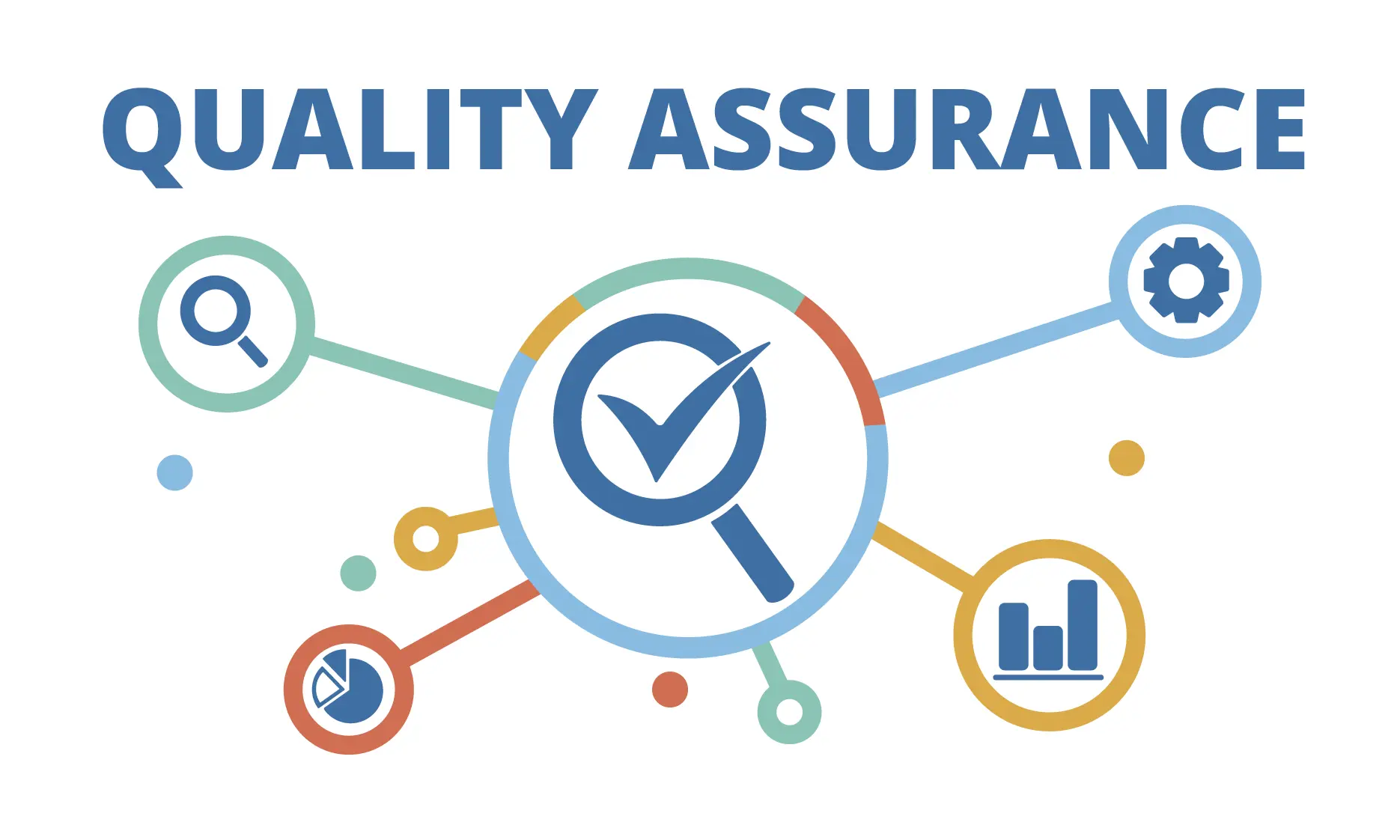
Testing and quality assurance are crucial phases in how to develop ERP software using PHP. These steps ensure the system functions as intended, meets user requirements, and is free from critical defects. By conducting various types of testing, you can identify and rectify issues early in the development process, resulting in a more reliable and robust ERP system.
A. Unit Testing and Test-Driven Development (TDD)
Unit testing and Test-Driven Development (TDD) focus on testing individual components or units of code:
- Unit Testing: Unit tests verify the functionality of small, isolated units of code, such as functions or methods. Tests are written to check specific inputs and outputs.
- Test-Driven Development (TDD): In TDD, tests are written before the actual code. This approach ensures that the code meets the desired behavior and that changes to the code are immediately validated by tests.
- Benefits: Unit testing and TDD improve code quality, identify bugs early, and facilitate code maintenance and refactoring.
B. Functional and Integration Testing
Functional and integration testing assess the behavior of the ERP system as a whole:
- Functional Testing: Functional tests evaluate whether each function or feature of the ERP system performs as expected. Test cases are designed to cover various scenarios and use cases.
- Integration Testing: Integration tests check the interactions between different modules or components of the ERP system. This ensures that modules work together seamlessly.
- Benefits: Functional and integration testing ensure that the ERP system meets business requirements, adheres to specifications, and functions cohesively.
C. User Acceptance Testing (UAT)
User Acceptance Testing (UAT) involves testing the ERP system from the perspective of end-users:
- User Involvement: Engage end-users, stakeholders, and business representatives in the testing process. They evaluate the system’s usability, functionality, and alignment with their needs.
- Real-World Scenarios: UAT includes testing the system in scenarios that closely mimic real-world business operations. This validates the system’s ability to support actual workflows.
- Feedback Incorporation: Gather feedback from users and stakeholders. Address any issues or concerns identified during UAT to ensure user satisfaction.
- Sign-Off: UAT culminates in user sign-off, indicating that the ERP system meets their expectations and is ready for deployment.
Explore our in-depth article on the software development lifecycle for comprehensive insights and guidance.
10. Security and Data Privacy

Security and data privacy are paramount in how to develop ERP software using PHP. ERP software development to protect sensitive information, prevent unauthorized access, and maintain the trust of users. By implementing robust security measures and following best practices, you can ensure the confidentiality, integrity, and availability of your ERP system’s data.
A. Implementing Role-Based Access Control
Role-Based Access Control (RBAC) restricts access to system resources based on user roles:
- User Roles: Define different user roles based on their responsibilities and access requirements. For example, roles could include administrators, managers, and regular users.
- Access Permissions: Assign access permissions to each role. Users can only access the functions and data relevant to their role.
- Granularity: Implement fine-grained access control, ensuring that users can perform only the actions necessary for their tasks.
B. Encryption of Sensitive Data
Encryption safeguards sensitive data by converting it into an unreadable format that can only be decrypted with the appropriate key:
- Data Encryption: Encrypt data at rest (stored in databases or files) and data in transit (transmitted between systems) using strong encryption algorithms.
- Key Management: Implement proper key management practices to ensure the security of encryption keys.
- Tokenization: Consider tokenization for sensitive data like payment information. Tokenization replaces actual data with tokens, reducing the risk of data exposure.
C. Regular Security Audits and Updates
Regular security audits and updates are essential to identify vulnerabilities and apply necessary fixes:
- Vulnerability Assessment: Conduct regular vulnerability assessments and penetration testing to identify potential weaknesses in the ERP system.
- Patch Management: Keep all software components, including the ERP system, frameworks, and libraries, up to date with the latest security patches.
- Security Training: Train developers and system administrators on secure coding practices and the latest security threats.
- Incident Response Plan: Have a well-defined incident response plan in place to address security breaches effectively and minimize damage.
Explore our article on the top software development platforms and discover the perfect solution for your next project. Read now for informed decision-making!
11. Deployment and Scaling

Deploying and scaling an ERP application, as explained in the step-by-step guide on how to develop ERP software using PHP, involves making it accessible to users while ensuring that the system can handle increased loads as the user base grows. By choosing suitable hosting options, implementing deployment strategies, and planning for scalability, you can ensure that your ERP software performs well and meets the demands of your organization.
A. Hosting Options for ERP Applications
Choosing the right hosting option is essential for the performance and accessibility of your ERP application:
- On-Premises Hosting: Host the ERP application on your own servers within your organization’s premises. This provides full control over the infrastructure but requires hardware maintenance and resource management.
- Cloud Hosting: Deploy the ERP application on cloud platforms like Amazon Web Services (AWS), Microsoft Azure, or Google Cloud. Cloud hosting offers scalability, flexibility, and the ability to pay for resources as needed.
- Hybrid Hosting: Combine on-premises and cloud hosting to balance security, control, and scalability.
B. Deployment Strategies (e.g., Docker, Cloud)
Different deployment strategies can streamline the deployment process and improve efficiency:
- Docker Containers: Use Docker to package the ERP application and its dependencies into containers. Containers are portable and ensure consistency between development, testing, and production environments.
- Serverless Deployment: Consider serverless architectures where the cloud provider manages the infrastructure, allowing you to focus solely on the application code.
- Continuous Integration/Continuous Deployment (CI/CD): Implement CI/CD pipelines to automate the deployment process, ensuring that updates and changes are deployed seamlessly.
- Blue-Green Deployment: Set up parallel environments (blue and green) to deploy new versions without downtime. Users switch between environments once the new version is ready.
C. Scalability Considerations for Growing Users
Scalability is crucial to accommodate a growing user base and increased usage:
- Horizontal Scalability: Scale horizontally by adding more servers or instances to distribute the load. This approach is often facilitated by cloud services.
- Vertical Scalability: Scale vertically by upgrading hardware resources (CPU, RAM) on existing servers.
- Load Balancing: Implement load balancing to distribute incoming traffic evenly across multiple servers, preventing overload on a single server.
- Auto-Scaling: Utilize auto-scaling features provided by cloud platforms to automatically adjust resources based on demand.
- Database Scaling: Ensure that the database can handle increased loads. Consider sharding, replication, and caching mechanisms.
12. Maintenance and Support
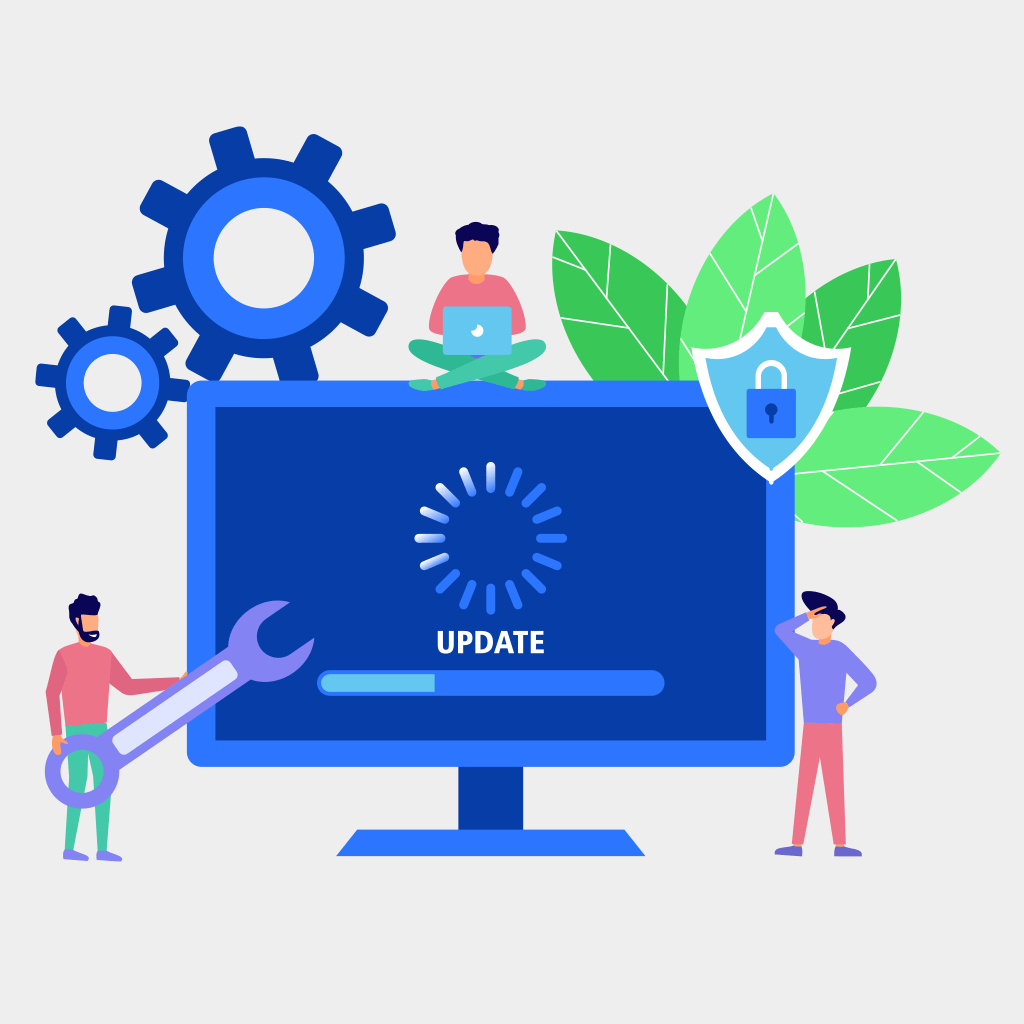
Maintenance and support are ongoing processes in ERP software development that ensure the system remains functional, up-to-date, and aligned with user needs. By addressing issues, continuously improving the software, and providing user support, you can maintain the quality and effectiveness of the ERP application.
A. Bug Tracking and Issue Management
Effective bug tracking and issue management are essential to address software defects and improvements:
- Bug Identification: Regularly monitor the system for issues and bugs through automated testing, user feedback, and monitoring tools.
- Issue Tracking System: Implement an issue tracking system or use project management tools to document and track bugs, feature requests, and enhancements.
- Prioritization: Prioritize issues based on their impact on users and the business. Critical issues should be addressed promptly.
- Testing and Verification: Thoroughly test and verify fixes before deploying them to production to avoid introducing new issues.
B. Continuous Improvement and Feature Updates
Continuously enhancing and updating the ERP system is essential to meet evolving business needs:
- User Feedback: Gather feedback from users to understand their pain points and identify areas for improvement.
- Release Planning: Plan regular software releases that include bug fixes, new features, and optimizations.
- Agile Development: Adopt agile methodologies to facilitate iterative development, allowing you to respond to changing requirements quickly.
- User Involvement: Engage users in the development process, providing them with early access to new features and updates for feedback.
C. Providing User Support and Training
Effective user support and training ensure that users can navigate the ERP system confidently:
- Help Desk: Establish a help desk or support system to address user inquiries, troubleshoot issues, and provide assistance.
- User Documentation: Create comprehensive user documentation, including user guides, FAQs, and tutorials, to help users make the most of the software.
- Training Programs: Offer training programs for new users and refresher courses for existing users. Training can be conducted through workshops, webinars, or online courses.
- Feedback Channels: Provide channels for users to report issues, suggest improvements, and share their experiences with the software.
Conclusion
Developing an ERP software using PHP requires a comprehensive understanding of business processes, technical expertise, and a commitment to delivering a reliable and efficient system.
By following best practices, leveraging industry standards, and staying adaptable to evolving needs, you can create an ERP system that adds value to your organization, enhances productivity, and contributes to achieving your business objectives. Remember that ERP software is an ongoing endeavor, requiring continuous improvement, updates, and adaptation to stay aligned with the dynamic landscape of modern business.

